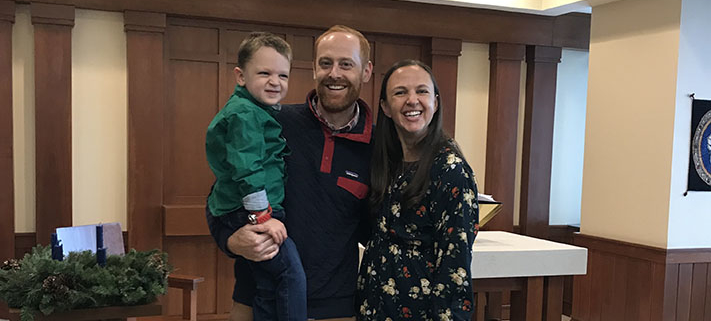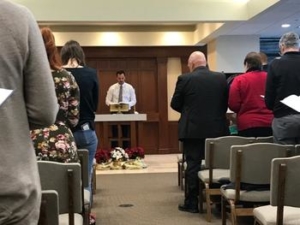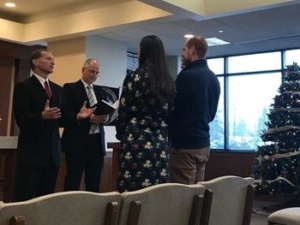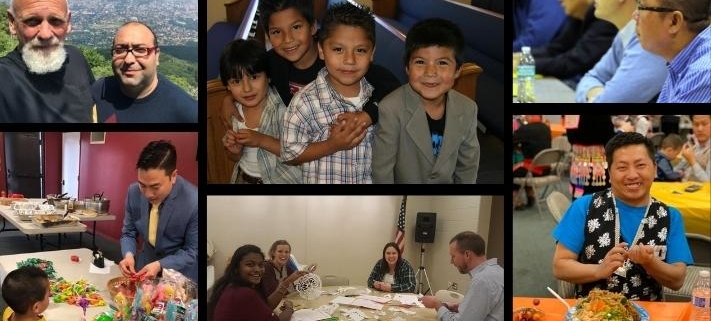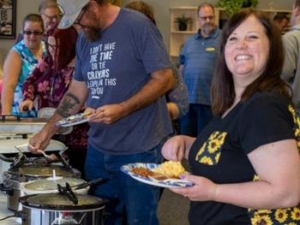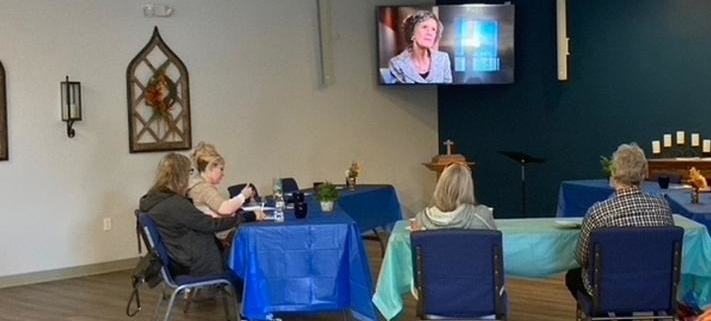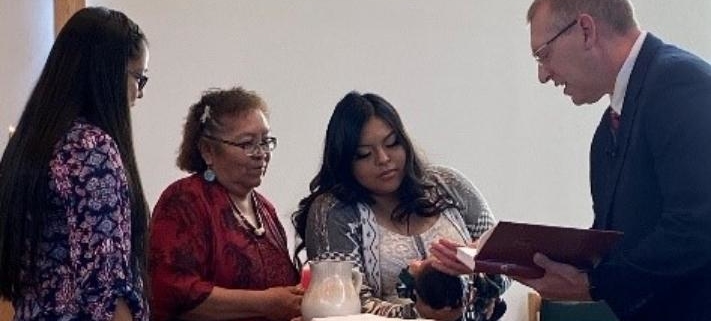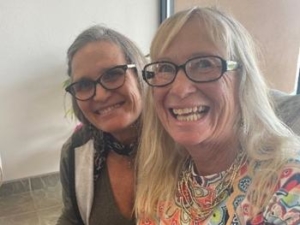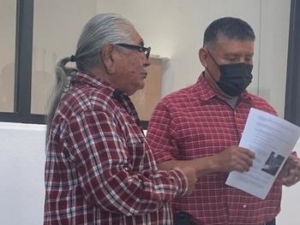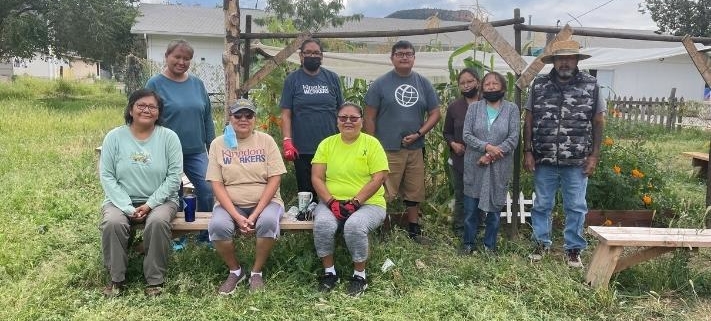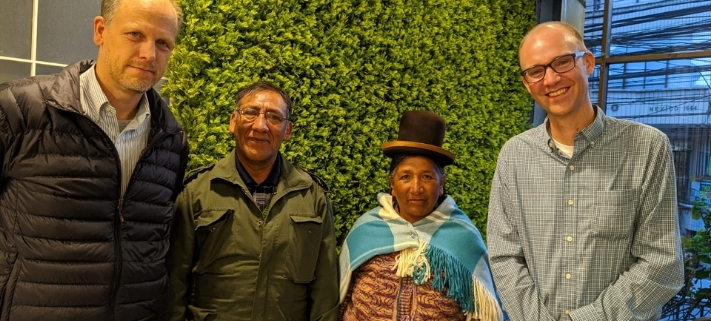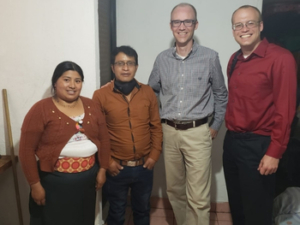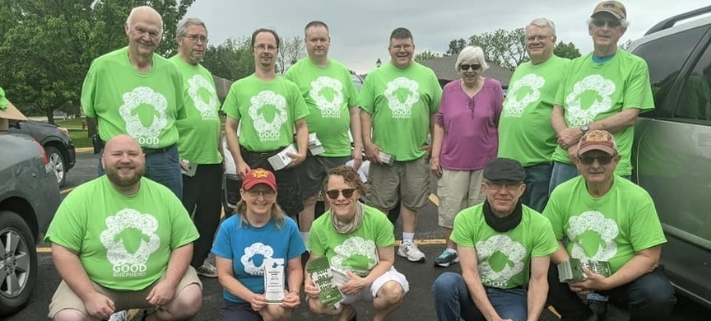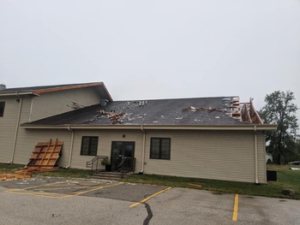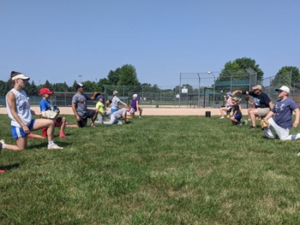Preaching on the First or Second Reading with the Day’s Gospel in Mind
2 – The Sermon and the Proper
Law and gospel. These two teachings, the most important truths of the Bible, must form the heart and core of the preacher’s sermon, and of the two, the gospel must predominate. The good news that sins are forgiven finds its source in the words and works of Jesus recorded in the four Gospels.
Of course, the good news is also announced in Isaiah 53 and Romans 3. The preacher who selects his sermon text from the books of the Old Testament or the Epistles is able (actually obligated) to preach the gospel. But this series of articles raises this question: Can the preacher remain faithful to legitimate homiletical principles of exposition and proposition and yet enable the Old Testament or Epistle text to focus also on the words and works of Jesus? Can the preacher find a legitimate connection between the First or Second Reading and the day’s Gospel and can he include in his sermon both the focus of the alternate text and that of the day’s Gospel?
The Proper
Finding an answer to these questions begins with an understanding of the Proper, a set of readings, prayers, psalms, and hymns selected for each Sunday and festival of the church year and also for minor festivals and parish occasions which a congregation might observe. As it developed in the western church (but not in the eastern church), the Proper changes from week to week while the Ordinary, a set of five song texts, repeats each week in some way. The Proper is most obvious in The Word section of the Lutheran order of service.
Tracing the history of the formation of the Proper isn’t easy. The first Christians relied on the apostles to relate and explain the words and works of Jesus, although Jewish Christians often retained their custom of reading from the Old Testament and singing the psalms. Eventually, copies of the Gospels and epistles became available and ministers read those scriptures in worship in a lectio continua pattern.1 The Gospel received special honor and was the last of the readings to be read.2 When believers began to pay special attention to the great events of Jesus’ ministry, the Gospel accounts which related those events were read as pericopal readings, i.e., cut out sections of the lectio continua manuscript. On these festivals, readings, prayers, and psalms complimented the Gospel account. As the church year formed, churchmen imitated this practice on other days as well. These variables, called propria, were generally established by Luther’s time and were adopted by most Lutheran churches. With the day’s Gospel setting the focus, the variables provide what we call the Proper.3 Historically, the Proper consisted of the introit, collect, Epistle, gradual, Gospel, and communio (sung before the preface). Christian Worship considers the Proper to be the Prayer of the Day, First Reading, Psalm of the Day, Second Reading, Gospel Acclamation, Gospel, Hymn of the Day, and Sermon. The lectionary serves the Proper in that it lists the readings selected for the various days and festivals. Christian Worship Altar Book lists all the parts of the Proper for Sundays, festivals of both the three-year and historic lectionaries, as well as for the minor festivals and occasions.
Unity of the Proper and the Unified Service
No one knows how the variables were chosen in antiquity. The theologians who made the decisions undoubtedly worked with wisdom and piety, but often as not were influenced by calendar changes, local circumstances, and even medieval heresies.4 Reformation theologians assembled a slightly revised version of the so-called historic lectionary and its matching set of introits, collects, and graduals, and these propers guided Lutheran worship for centuries.
How well the readings, prayers, and psalms of the historic series matched is open to debate. The interconnection is obvious in the Proper for the Transfiguration of Our Lord but not as clear for the Third Sunday in Lent. The propers of the later Epiphany Sundays and the Sundays after Trinity have even less unity. Some have tried to find a unity in the historic propers,5 but Preach the Gospel was wary. Understanding the Proper does not mean, the authors stated, that the preacher “strains to discover and elaborate points of contact between the sermon text and the other propers [sic] where such points of contact do not really exist.”6 Trying to preach on an Epistle text with the day’s Gospel in mind was often a challenge at best and often impossible.
How well the readings, prayers, and psalms of the historic series matched is open to debate.
The three-year lectionary, created by Vatican scholars in 1967 to replace the historic series and then revised and published by the Inter-Lutheran Commission on Worship in 1973, expanded the selection of Gospels and Epistles and added a reading from the Old Testament. “In almost every instance,” ILCW commissioners stated, “the Old Testament passage was chosen because it relates to the Gospel.”7
In a major change from existing patterns, however, the three-year lectionary reclaimed the ancient custom of lectio continua. Creators selected readings from one particular epistle to be read over a span of weeks notably during the Epiphany, Easter, and Pentecost seasons. The ILCW followed the Vatican’s lead. While pointing out the value of the plan, framers recognized that the idea of a unified service was usually impossible. “It must be remembered, however, that such semicontinuous use of an epistle is somewhat isolated…the epistle provides a band of blue week by week; the Gospel has a red thread connecting its readings. But they do not necessarily mix to form purple.”8
The ILCW lectionary was approved and began to experience wide-spread use in WELS in the early 1970s. After several liturgy committee debates, the lectionary published in Christian Worship resources (1993 and following) was virtually unchanged. The volumes of the text studies in Sermon Studies9 (based primarily on the ILCW readings) included contributors’ efforts to find a thematic thread in the readings, but the efforts were often cumbersome. At that point the idea of preaching on Epistle texts in light of the day’s Gospel had no cause for discussion. (CW93’s limited set of prayers, psalms, and verses of the day also rendered a unified proper difficult.)
Efforts toward enhancing the unified Proper
The committees which worked on Christian Worship Supplement (2008) sensed a weakness with the lectio continua approach and worked to introduce unity to the three-year cycle. Authors created an entirely new set of Epistle selections designed to match the themes of the appointed Gospels and also replaced many prophetic readings chosen by ILCW with Old Testament narratives. The Christian Worship Supplemental Lectionary provided an impetus for a serious discussion of the unity of the Proper and aroused some interest in the concept of preaching on the First and Second Readings with the day’s Gospel in mind.
A major effort of lectionary revision began in 2014 with the appointment of the Scripture Committee of the WELS Hymnal Project.
A major effort of lectionary revision began in 2014 with the appointment of the Scripture Committee of the WELS Hymnal Project. One of the committee’s primary goals was to restore the unity of the Proper for each Sunday and festival of the three-year cycle and promote the idea of a unified service. They identified a theme or focus from the day’s Gospel and selected First and Second Readings which supplemented and complimented the day’s Gospel. The following comparisons indicate the difference in approach:
ILCW Pentecost 10B
Exodus 24:3-11 – The Lord confirms his covenant with Israel
Ephesians 4:1-7, 11-16 – Unity and maturity in the body of Christ (lectio continua from Ephesians)
John 6:1-5 – Jesus feeds 5,000
CW Proper 12B: God provides earthly bread
Exodus 16:1-15 – The Lord sends bread to sustain Israel
2 Corinthians 9:8-11 – The promise and use of earthly bread
Mark 6:35-44 – Jesus feeds 5,000 (the Mark account replaces John’s account)
The preacher might see how the Lord’s actions in Exodus and his promises in 2 Corinthians blend with the miracle of supplying bread to 5,000—in fact, more than enough.
ILCW Pentecost 15A
Exodus 6:2-8 – The Lord’s identifies himself to Moses
Romans 11:33-36 – The depth of the riches of God (lectio continua from Romans)
Matthew 16:13-20 – Jesus sought, received, and blessed the confession of his disciples
Proper 16A: Who do they say I am?
Exodus 34:5-9 – The Lord identifies himself and Moses acknowledges the Lord
Romans 10:5-13 – Everyone who believes and confesses will be saved
Matthew 16:13-20 – Jesus sought, received, and blessed the confession of his disciples
The preacher might connect the believing confession noted in Exodus and Romans with Peter’s confession in the Gospel. A confession of the name of the Lord is the password to life with God.
You have to deal not only with the bride but also with the rest of the family.
Preach the gospel by preaching the Gospels?
Our homiletical heritage exalts the independence of the sermon text and our seminary training exhorted us to “preach the text.” As a preacher and a teacher of preachers I agree wholeheartedly. One of our best preachers, Prof. Daniel Deutschlander, often noted, however, that preaching on a text is like getting married: You have to deal not only with the bride but also with the rest of the family. The Western Rite and its inclusion of the Proper obligates this consideration. The question is: How does one deal with the family without harming the bride? We respond that CW21’s new unified Proper enables us to preach on the First and Second Readings with the day’s Gospel in mind.
Written by James Tiefel
Prof. Tiefel, now Pastor Tiefel, serves two small congregations in Mequon, WI, in semi-retirement. Over a 35-year career at Wisconsin Lutheran Seminary he taught classes in worship and preaching. As an every-Sunday preacher once again, he is able to combine many of the concepts he taught in the classroom with practical experience.
In the previous issue of this series, we adduced portions of a sermon based on 1 Kings 3:5-12, the conversation between the LORD and Solomon. In that sermon, the Gospel, Matthew 13:44-52, set the pace; it introduced the text. The sermon underscored the truth Jesus emphasized in the two parables. The basic outline:
“What We Want Is What Matters”
So what matters?
So how much does it matter?
The exposition seems to have been faithful to the text. It included the historic connections and messianic implications. The text was predominant, but not dominant. It complemented the point Jesus was making in the Gospel.
The sermon segment that follows illustrates another way to preach on the First Reading with the day’s Gospel in mind. Prof. Brad Wordell of Wisconsin Lutheran Seminary preached on Elijah and the prophets of Baal at the seminary’s opening service in August 2021. He used Proper 19B – Spiritual warfare:
1 Kings 18:21-39 – Elijah and the prophets of Baal
Ephesians 6:10-18 – Spiritual warfare
Mark 9:14-27 – Jesus heals a boy possessed by a spirit
The theme of the sermon was “The Home Team Loses” and he addressed three points in the exposition of 1 Kings 18: the nature of the battle, how the war is fought, and how the battle ends.
Third and finally, how the battle ends. How dramatic! The LORD does more than is needed, expected, or imagined. He often does. The LORD sends fire from heaven just minutes after Elijah begins praying—not just the sacrifice, but the altar, even the rocks, the ground, and the water are consumed, and everyone falls down and acknowledges that the LORD is God. Baal is proven to be a lie, an invention of the father of lies, and the false prophets are put to death in the Kishon Valley. The newspaper the next morning would have had this headline: The Home Team Loses. This in spite of everything being in their favor. It was their mountain! He had 450 prophets to one! And Baal was supposed to be the god of rain and lighting. But Baal couldn’t light one fire.
We weren’t there to see this victory on Mt. Carmel and such victories don’t come along very often. But this dramatic defeat of the home team and the ministries of Elijah and Elisha at this time were the LORD’S ways of promising that his plan of salvation was still on track: his eternal Son would come to destroy the work of the devil, to set the captives free, and to open the way to eternal life. On Mt. Carmel the home team lost because in the “eternal” battle the home team loses! And that is exactly what we heard in the Gospel tonight! Jesus, the eternal Son of God, came onto the devil’s turf. He could say to demons, “I command you, come out of him and never enter him again.” By offering himself for our sins on the cross, Jesus has broken the devil’s hold on us too. He can no longer accuse us, not because we haven’t sinned but because those sins have been paid for. And if Jesus’ victory over the devil in this world wasn’t enough, our Savior did more than we would have asked or imagined: the Savior rose from the dead and announced his eternal victory in the devil’s headquarters, in hell itself—another nail in the home team’s coffin.
The final nail will come, when the Lord Jesus returns in glory with all his holy angels and raises all the dead and judges all mankind. The LORD who sent fire on Mt. Carmel will send fire on the whole universe. He will destroy it and create for us and all believers a new and perfect world. Everything will be new there. No sin or sickness or hatred or favoritism or oppression or racism or death—none of those things. There will be no enemies there, no battle to be fought. Everything will be new. We will be the new home team and our joy will have no end in the presence of the LORD our God.
The Psalms, the Sermon, and the Proper
A decision was made when Christian Worship: A Lutheran Hymnal and its supporting resources were published to list the selected Psalm of the Day in juxtaposition with the three lessons. That decision led many to the impression that the Psalm of the Day was a fourth lesson and a potential sermon text. The practice eventually appeared wherever the lectionary was published. The Sermon Studies series include two volumes of text studies on the psalms.
Decades have passed since decisions were made for the 1993 hymnal, but this member of the Liturgy Committee does not recall a decision to list the psalms with the readings. Project Director Kurt Eggert called the psalm selections “liturgical songs” and most were edited (some severely, e.g., Psalm 73) to promote a specific theme and/or to fit on a page! Christian Worship Manual mentions nothing about using the psalms as sermon texts. For some reason CW Manual lists the other parts of the Proper separately, the prayer, verse, and hymn of the day, but not the psalm.
The new Christian Worship and its resources eliminate this format. Where the lectionary is included (e.g., in Christian Worship Hymnal) only the three readings are included. Where the entire Proper is listed (e.g., in Christian Worship Altar Book), the prayer, psalm, verse, and hymn of the day are noted apart from the readings.
There is nothing wrong with preaching on the psalms. The preacher should not assume, however, that the selected Psalm of the Day is a suggested text.
1 Justin Martyr, First Apology, chapter 67: “…the memoirs of the apostles or the writings of the prophets are read, as long as time permits; then, when the reader has ceased, the president verbally instructs, and exhorts to the imitation of these good things.”
2 Philip Pfatteicher, Commentary on the Lutheran Book of Worship, p. 141 (Minneapolis: Augsburg) 1990.
3 The set for each Sunday or festival is the Proper for the day. Both the Proper and the Ordinary are a set of parts; our resources do not speak about the Propers for the day any more than they speak about the Ordinaries. The plural is used only for a set of propers, e.g., the propers for the Sundays in Lent.
4 Luther complained that many of the ancient Epistles “seem to have been chosen by a singularly unlearned and superstitious advocate of works.” (LW, AE, Vol. 53, p. 24).
5 Fred Lindemann in The Sermon and the Propers, and Ralph Gehrke in Planning the Service made valiant efforts to find such a unity. (Both are Concordia Publications, and both are available at Amazon.)
6 Joel Gerlach and Richard Balge, Preach the Gospel, p. 159 (Milwaukee: Northwestern, 1982).
7 Inter-Lutheran Commission on Worship, The Church Year Calendar and Lectionary, p. 22 (St. Louis: Concordia, et al., 1973).
8 Inter-Lutheran Commission on Worship, p. 22.
9 Eleven volumes of Sermon Studies, all published by Northwestern Publishing House between 1982 and 2002, are identified in the online library catalog of Wisconsin Lutheran Seminary.
Learn about how WELS is assisting congregations by encouraging worship that glorifies God and proclaims Christ’s love.
WELS Commission on Worship provides resources for individuals and families nationwide. Consider supporting these ministries with your prayers and gifts.
[fbcomments num=”5″]


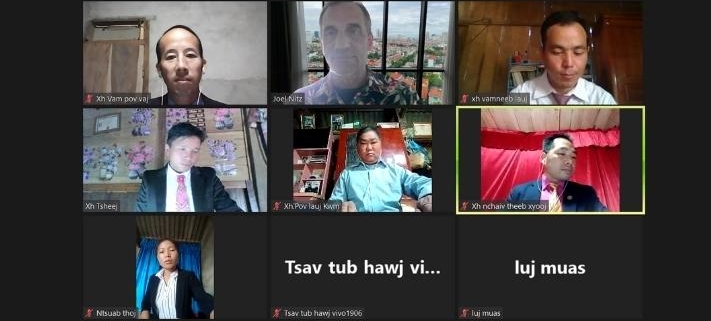

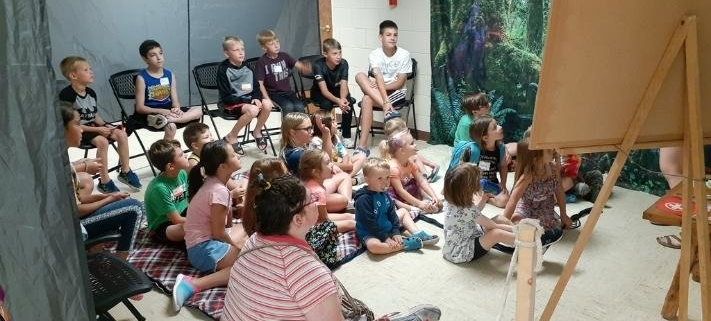
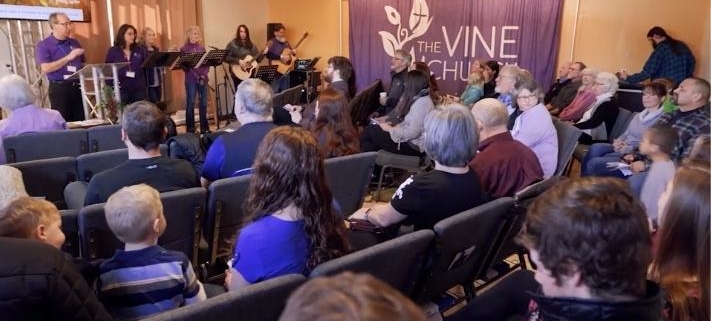
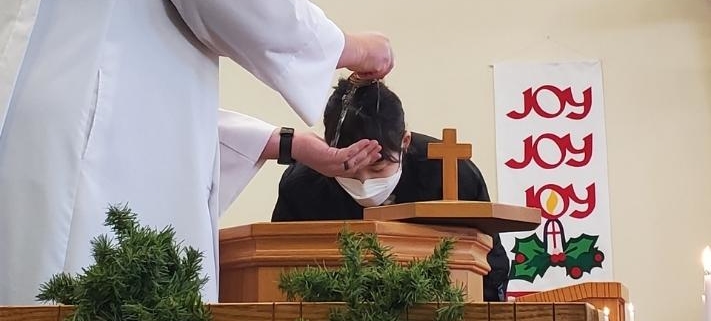
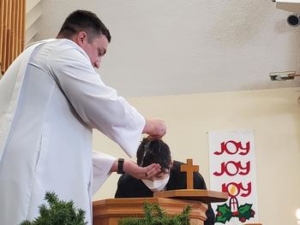

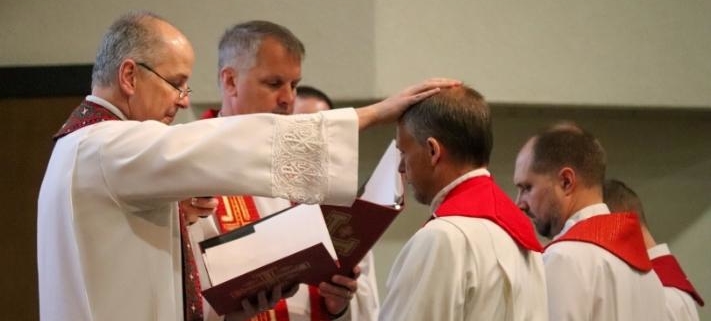
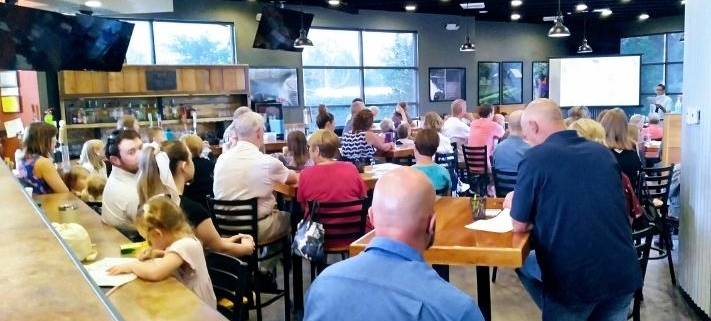


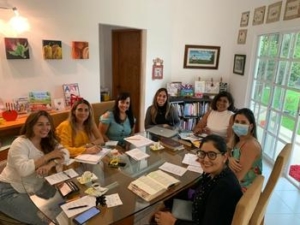 and the Dean of Women position was created to help them to take advantage of these opportunities.
and the Dean of Women position was created to help them to take advantage of these opportunities. Amelia is a teacher who lives in Pucallpa in the river-jungle region of Perú. Like Marli, Amelia is also in the advanced courses of Academia Cristo and is being guided by a missionary to share Jesus with others in her hometown. With much prayer, Amelia is slowly transforming her home into a place for others to come and to gather in the Word. She is especially passionate about the children in her community and is currently using her summer vacation time to teach about 30 children how to read using the Bible – a special project that she began once she realized that some of the children could not read in her Bible studies with them.
Amelia is a teacher who lives in Pucallpa in the river-jungle region of Perú. Like Marli, Amelia is also in the advanced courses of Academia Cristo and is being guided by a missionary to share Jesus with others in her hometown. With much prayer, Amelia is slowly transforming her home into a place for others to come and to gather in the Word. She is especially passionate about the children in her community and is currently using her summer vacation time to teach about 30 children how to read using the Bible – a special project that she began once she realized that some of the children could not read in her Bible studies with them.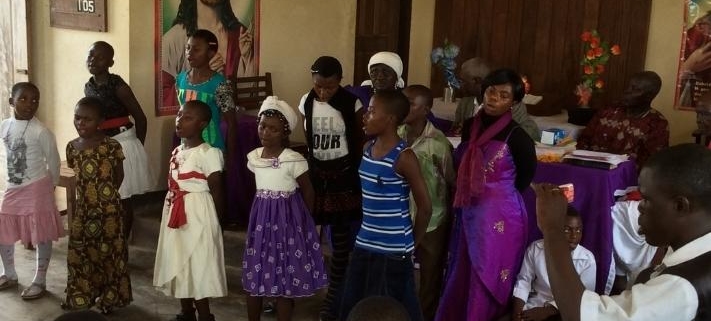
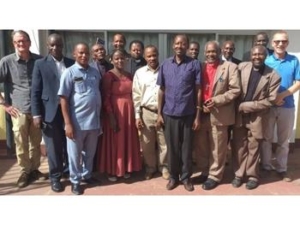
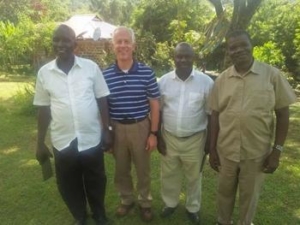
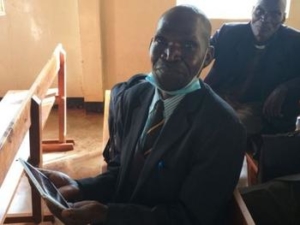
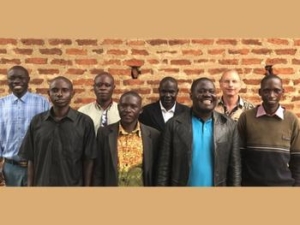
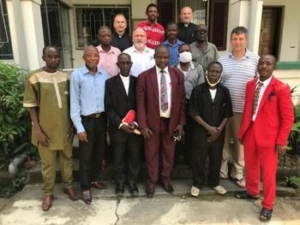
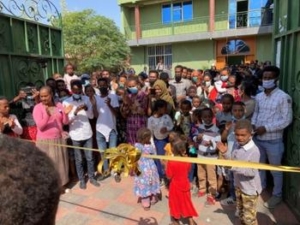

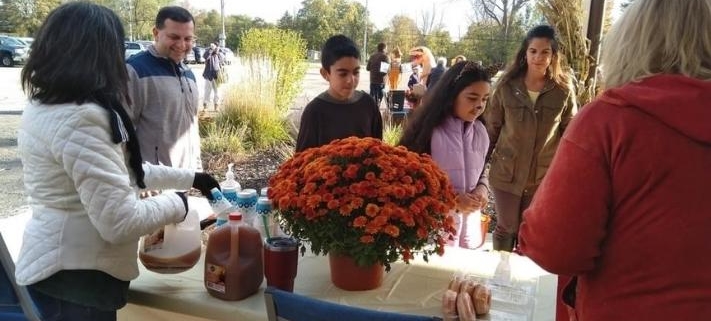

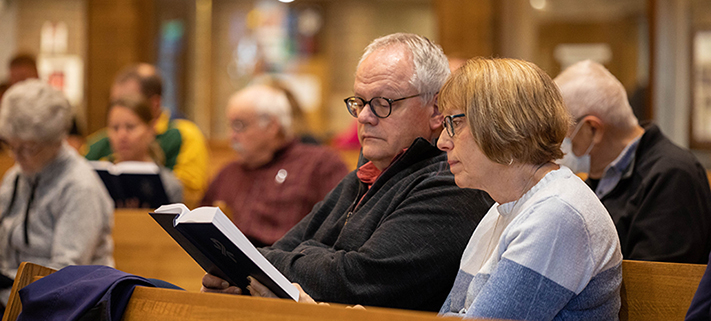
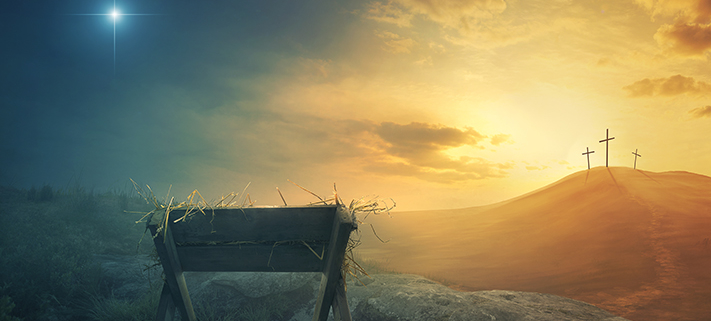

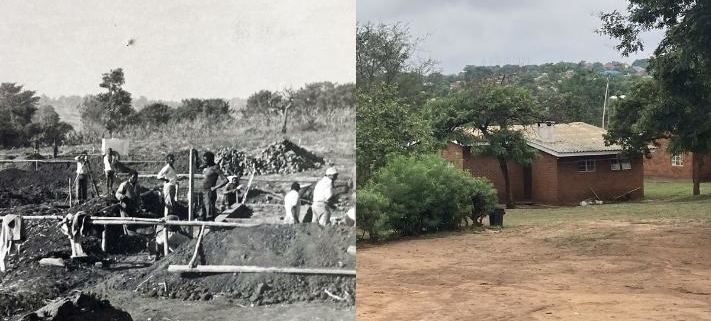
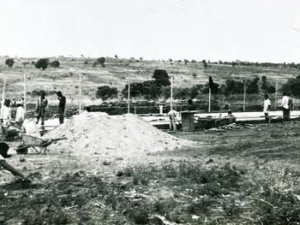
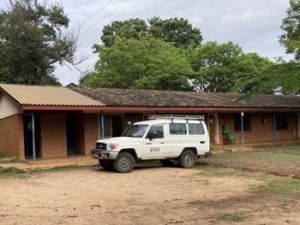 They’re flying on commercial airlines to train pastoral students in places like Cameroon and Uganda, Ethiopia and Kenya.
They’re flying on commercial airlines to train pastoral students in places like Cameroon and Uganda, Ethiopia and Kenya.
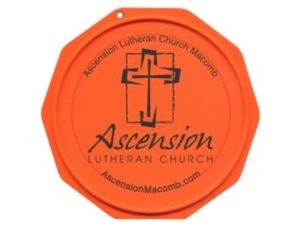
 On the Sunday prior, the congregation surprised me with a celebration of my 40 years in the ministry. My presentation gift was a new black leather riding jacket. On the back – big and bold – was an orange and black disc with a cross and stylized Luther Rose in the center and the five “solas” around the edge: Sola Scriptura, Sola Fide, Sola Gratia, Solus Christus, Soli Deo Gloria. On rockers above and below that disc were banners proclaiming: “Let’s evangelize them all and let God sort it out.” The congregation has obviously bought into the sentiment of those patches: we recklessly share the gospel as much as we can, trusting that God will make of that what he alone can and will. They wanted to be sure that I would be well-attired for the Blessing of the Bikes event. That jacket is sure to spark conversations about our Savior in the years to come.
On the Sunday prior, the congregation surprised me with a celebration of my 40 years in the ministry. My presentation gift was a new black leather riding jacket. On the back – big and bold – was an orange and black disc with a cross and stylized Luther Rose in the center and the five “solas” around the edge: Sola Scriptura, Sola Fide, Sola Gratia, Solus Christus, Soli Deo Gloria. On rockers above and below that disc were banners proclaiming: “Let’s evangelize them all and let God sort it out.” The congregation has obviously bought into the sentiment of those patches: we recklessly share the gospel as much as we can, trusting that God will make of that what he alone can and will. They wanted to be sure that I would be well-attired for the Blessing of the Bikes event. That jacket is sure to spark conversations about our Savior in the years to come.